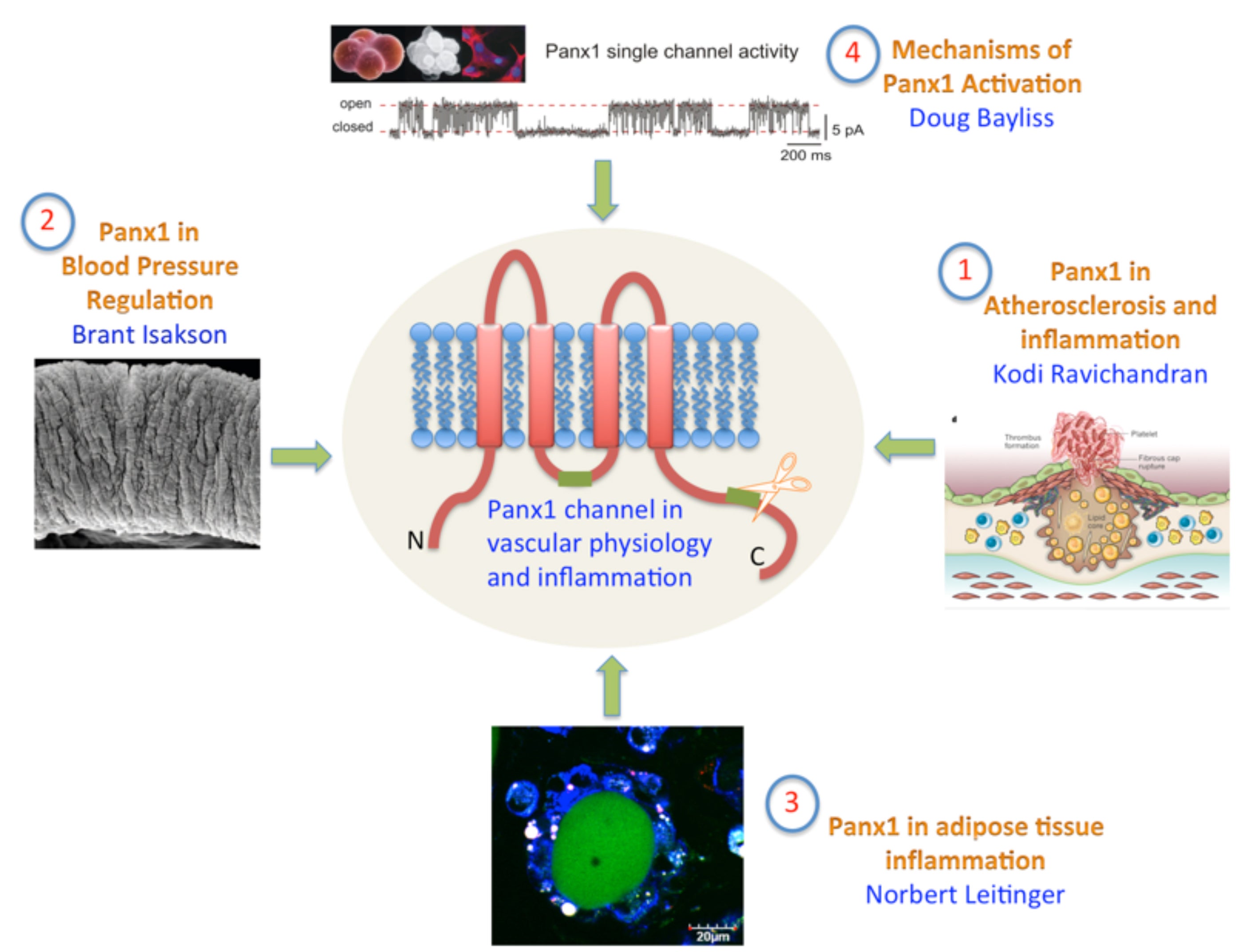Research
Projects addressed as part of the P01 “Pannexin channels in vascular physiology and inflammation”
The four primary projects share a focus in understanding how Pannexin 1, a key gateway for ATP release from cells, and the purinergic signaling downstream of nucleotides contributes to atherosclerosis, hypertension and obesity-induced insulin resistance. Fundamental to defining Panx1 function in diseases is an understanding of the mechanism of Panx1 regulation.
Project 1 tests the hypothesis that disruption of the apoptotic cell clearance process contributes to the inflammation that drives atherogenesis and tissue inflammation. Since recent work by the Project Directors identified a mechanism of Panx1 activation via cleavage at its C-terminus, how the subsequent ATP release from apoptotic cells and macrophage recruitment regulates atherosclerosis and lung inflammation is tested in this project.
Project 2 tests how norepinephrine-induced activation of Panx1 via α1D-adrenoceptor stimulation regulates vascular tone/blood pressure, and will address a distinct and novel α1D-mediated Panx1 activation involving the 1st intracellular loop (green).
Project 3 tests the hypothesis that modulation of ATP release via Panx1 in adipocytes via apoptosis- and norepinephrine-mediated mechanisms alters adipose tissue inflammation and metabolic regulation. The preliminary studies to date justify testing both cleavage-mediated and α1D-mediated types of Panx1 activation in adipocytes.
Project 4 interfaces with all three of the above projects in deciphering molecular determinants and cellular mechanisms for regulation of Panx1 channel activity, and their relevance to vascular biology and hypertension. All of these projects combine the power of mouse models with ex vivo and in vivo mechanistic studies to probe Panx1 function.

